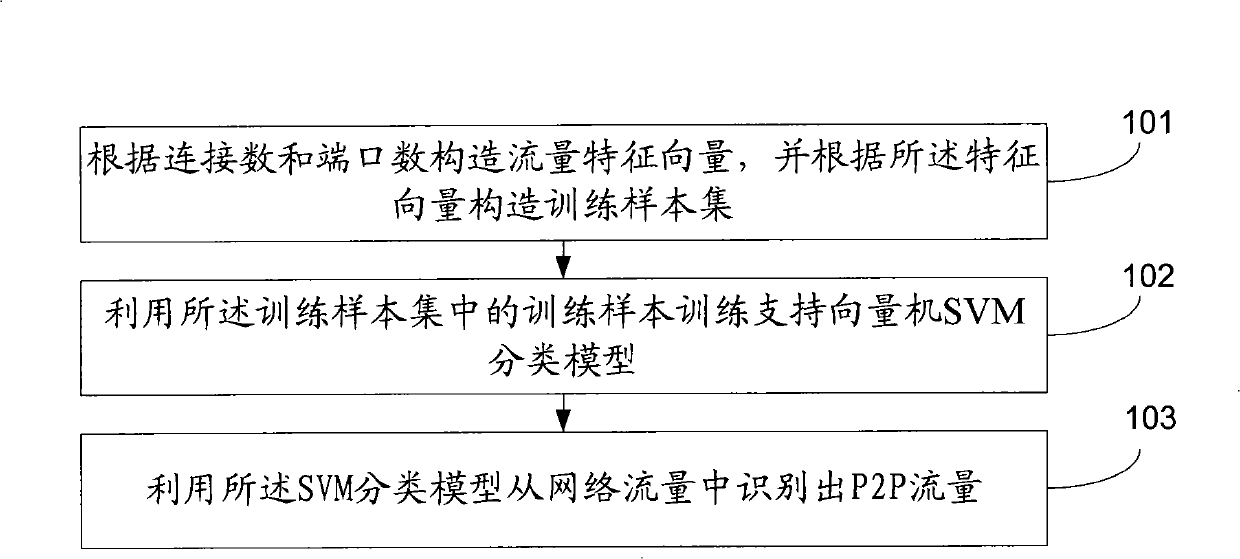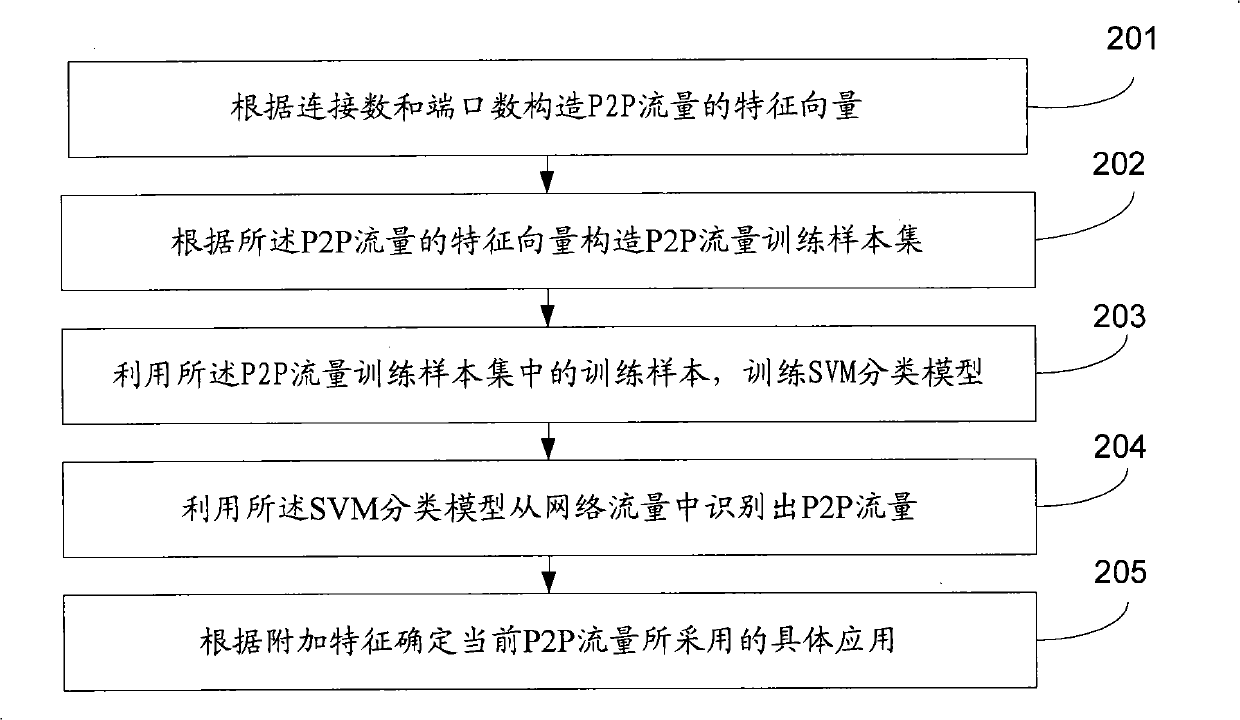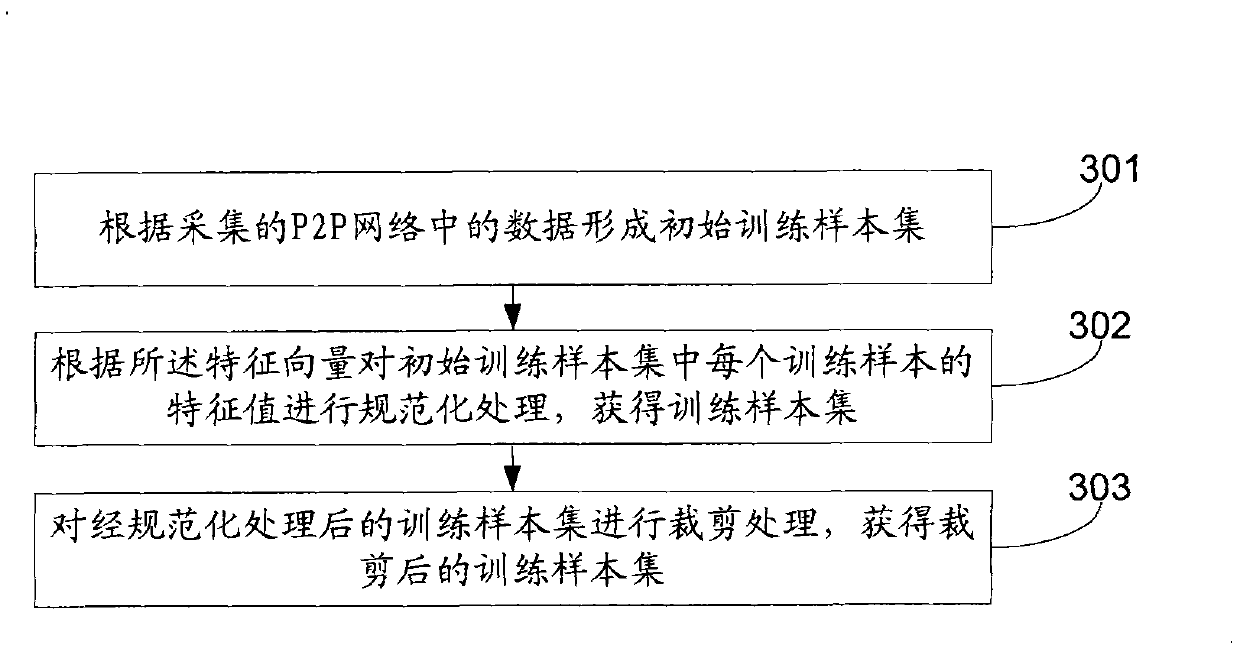Method and system for recognizing end-to-end flux
A technology of network traffic and P2P traffic, which is applied in the field of communication, can solve the problems of unable to identify P2P traffic, unable to effectively control P2P traffic, and unable to identify
- Summary
- Abstract
- Description
- Claims
- Application Information
AI Technical Summary
Problems solved by technology
Method used
Image
Examples
Embodiment 1
[0028] See figure 1 , The end-to-end traffic identification method provided in the first embodiment of the present invention includes the following steps:
[0029] Step 101: Construct a traffic feature vector according to the number of connections and the number of ports, and construct a training sample set according to the feature vector.
[0030] Step 102: Use the training samples in the training sample set to train a support vector machine SVM classification model.
[0031] Step 103: Use the SVM classification model to identify P2P traffic from the network traffic.
[0032] Through the method provided by the embodiment of the present invention, the traffic feature vector is constructed according to the number of connections and the number of ports, and the constructed feature vector can reflect the characteristics of TCP and UDP P2P traffic, and then use the feature vector to construct a training sample set and train support vector machine classification Model, and identify network...
Embodiment 2
[0034] See figure 2 , The P2P traffic identification method provided in the second embodiment of the present invention includes the following steps:
[0035] Step 201: Construct a feature vector of P2P traffic according to the number of connections and the number of ports.
[0036] By analyzing the difference between P2P traffic and non-P2P traffic, it can be known that for P2P applications, a certain node is connected to multiple nodes or super nodes in the network, but the number of connections between the two nodes is not many. This is because To ensure the load balance of data transmission, by limiting the number of connections between two nodes, the high load between the two nodes can be avoided, and the communication pressure can be reduced. For non-P2P applications, the nodes in the network appear as a certain node and A small number of nodes in the network have connections, but there are more connections between two nodes.
[0037] Constructing the feature vector of P2P tra...
Embodiment 3
[0062] In order to establish the SVM classification model, a large amount of data needs to be collected on the network as training samples and test samples. However, among these many samples, the support vector plays a role in establishing the classification model. Other training samples are not helpful for this, so you can Tailor the training samples to reduce the size of the training sample set.
[0063] See Figure 4 This embodiment provides a cropping processing method that can be used to perform cropping processing on a normalized training sample set to obtain a cropped training sample set. The cropping processing method includes:
[0064] Step 401: Select the first training sample set from the training sample set for training, and obtain the initial hyperplane of the initial classifier.
[0065] Assuming that the training sample set is M, a part of samples from M is randomly selected as the first training sample set N. Perform SVM training on the first training sample set N ac...
PUM
 Login to View More
Login to View More Abstract
Description
Claims
Application Information
 Login to View More
Login to View More - R&D
- Intellectual Property
- Life Sciences
- Materials
- Tech Scout
- Unparalleled Data Quality
- Higher Quality Content
- 60% Fewer Hallucinations
Browse by: Latest US Patents, China's latest patents, Technical Efficacy Thesaurus, Application Domain, Technology Topic, Popular Technical Reports.
© 2025 PatSnap. All rights reserved.Legal|Privacy policy|Modern Slavery Act Transparency Statement|Sitemap|About US| Contact US: help@patsnap.com



